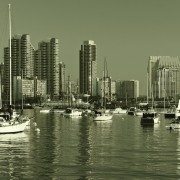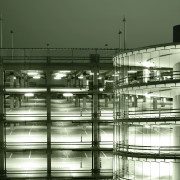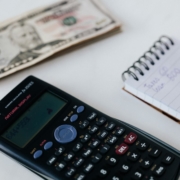Published Article on 179D Tax Deductions use in the Roofing Industry
We would like to take a moment and Congratulate our director of engineering Nelson E. Marin for recent article that was published in Roofing the Industry’s Voice read the article below!
Do Your Past Commercial Projects Qualify for an Unused Tax Deduction?
Do Your Past Commercial Projects Qualify for an Unused Tax Deduction?
Since 2006, IRS Section 179D has permitted qualifying buildings to receive tax deductions for energy efficiency. In general, except for some roofers from the best shingle roofing company in Fort Collins, most roofing professionals have been unaware of this tax break and, as a result, have not taken advantage of it. Here’s a look at the 179D Tax deduction, some reasons why it has been overlooked and, most importantly, whether there is still time for you or your clients to retroactively claim Section 179D.
What is 179D?
Enacted under the Energy Policy Act of 2005, Congress added Section 179D as an “energy efficient commercial building deduction.” It was intended to serve as an incentive for the public and private sector to build energy efficient buildings. Overall, the provision allows for a tax deduction of up to $1.80 per square foot for buildings that meet certain energy usage reduction criteria. More importantly for roof designers and installers, the section allows for a “partial deduction” of $0.60 per square foot for three individual categories, one of which is the building envelope, including the roof. And so, after house owners learn how to measure roof from satellite free, only then do they call in roofers, for an accurate measure of the roof would save them money.
A variety of different factors go into determining if the roof system will meet the energy savings criteria. In the Northern climate zones roofing systems with increased insulation values as well as vegetative roofing systems are going to have potential to exceed the energy saving criteria of 179D. In Southern climate zones (which typically include Fl, TX, as well as southern portions of AL,GA,LA,MS,AR,OK,NM,AZ,CA) cool roofs and insulated systems typically are good candidates to qualify for the energy saving targets established in 179D, so why have relatively few roofing contractors made use of the provision? At least part of the answer has to do with how the provision was introduced and the lack of expertise available at the time to provide the necessary third-party verification.
In order for a building envelope to qualify for the deduction, the IRS requires a software simulation to model the annual energy cost savings for the building compared to a theoretical reference building. This study has to be completed and inspected by an independent engineer. However, when the tax provision was initially enacted in 2006, there wasn’t a single firm in the nation that was structured to offer this IRS-required service.
To make the tax incentive more accessible, the IRS developed a simplified “energy analysis,” referred to as the “Interim Rule” for partially qualifying lighting improvements. This adjustment, proved effective for the lighting industry, whose contractors and engineers quickly developed the necessary verification services to demonstrate compliance with the provision’s requirements.
While lighting contractors benefitted from the new tax code, contractors who worked on the building envelope, were left outside. When Section 179D was introduced, the building envelope had to produce a nearly 17 percent reduction of combined energy use from the building’s HVAC and lighting systems. This proved to be a difficult target and in 2008 the IRS issued a notice that reduced the requirements to 10 percent with the hope of stimulating use of the 179D incentive in the building envelope industries.
What Does This Mean?
Once the lower, 10-percent threshold was permitted by the IRS, engineers and tax specialists recognized that the benefits that have been available to other industries were now accessible to roof flashing repair. While a few roofing companies have benefited from millions of dollars in tax savings through Section 179D, many millions of dollars more remain unclaimed by roofing companies that have installed new roof systems.
Private and government buildings that meet the criteria are both eligible for the tax incentive. To date, most of the tax deductions have originated from government-owned buildings. Congress recognized that government entities cannot themselves benefit from tax deductions so they allowed the deductions to be allocated to the designer or contractor of the energy efficient system.
Retroactive Opportunity – the Clock is Ticking
The provisions for Section 179D were in effect from 2006 through the end of 2013. Congress approved extensions in 2006 and then again in 2008 and there is bipartisan support to continue the extension through 2015 at least, although legislation to do so is still pending. This means that current and future qualifying projects seem likely to be eligible to claim this tax break.
Here’s the important part: for work completed before 2014, there is still an opportunity to claim the tax break, but time is running out.
For public projects, a study can be performed for pre-2014 projects to see if you can receive the government-allocated deduction. However, the IRS only allows you to amend open tax years, generally three years from the filing date, so it is better not to wait.
For private projects, the building owner can claim deductions in the current tax year, meaning that no amendment is necessary for eligible buildings all the way back to 2006. While you may not directly benefit from this tax deduction, it can be useful information for your commercial clients and may help with bidding future projects assuming that the tax deduction is extended.
The Section 179D tax deduction has been historically underused by roofing contractors; to change this, the IRS has modified the requirements to make it more viable. Also, the industry now has the third-party engineering firms required to verify eligibility. Bottom line, there are still opportunities for contractors who have performed energy saving roof installations to realize significant tax savings.
Nelson E. Marin, Director of Engineering, Walker Reid Strategies, Inc.
Walker Reid Strategies is a Licensed Engineering Firm that specializes exclusively in the 2005 EPAct §179D certifications. Their staff is composed of a diverse group of members including Professional Engineers, Commercial Energy Raters, and CPA’s. With an extensive project portfolio in 179D Envelope Certifications, Walker Reid Strategies is one of the nation’s leading Section 179D providers.









Leave a Reply
Want to join the discussion?Feel free to contribute!